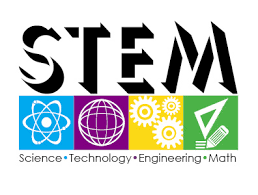White Paper: STEM Career Opportunities in the US and Canadian Midwest – Myths, Realities, and Strategic Pathways
Executive Summary
Contrary to a commonly circulated misconception, the US and Canadian Midwest regions are not devoid of STEM opportunities. In fact, these regions are experiencing a robust and increasing demand for science, technology, engineering, and mathematics (STEM) professionals. The talent shortage, especially in engineering and IT disciplines, underscores a clear need for skilled professionals.
This white paper addresses current labor market realities, dissects job availability data, provides a SWOT analysis of pursuing STEM careers in these regions, and outlines how IAS-Research.com and KeenComputer.com can strategically support professionals and graduates seeking career advancement in high-demand STEM roles.
1. Labor Market Reality: STEM Demand in 2024–2025
United States – Midwest
According to [DesignNews][2] and the [US Bureau of Labor Statistics][5], the US faces a significant engineering talent shortfall:
- 825,000+ engineering vacancies remain unfilled annually, despite ~141,000 graduates entering the workforce.
- The Midwest (Illinois, Ohio, Michigan, Indiana, Minnesota, Wisconsin) is a hub for advanced manufacturing, renewable energy, ag-tech, and industrial automation.
- On Indeed.com (July 2025), there were:
- 32,000+ software engineering jobs listed in Midwest states.
- 12,500+ mechanical and electrical engineering jobs.
- 7,800+ data science and cybersecurity roles.
- Dice.com shows strong demand in:
- AI/ML engineering
- Cloud infrastructure
- Industrial IoT and Robotics
Canada – Midwest Provinces
Canada’s provinces like Manitoba, Saskatchewan, and Alberta report:
- Increasing demand for mechanical, civil, software, and renewable energy engineers.
- Competitive salaries (avg. CAD $70,000–$120,000/year).
- Express Entry STEM immigration pathways (via [Moving2Canada][7]).
- Jobs on Indeed.ca (July 2025):
- 2,300+ engineering roles in Manitoba & Saskatchewan
- 4,800+ IT & data-related jobs
2. Key Industries Fueling Demand
|
Region |
Leading Industries |
|---|---|
|
US Midwest |
Advanced manufacturing, automation, logistics, biotech, ag-tech |
|
Canada Midwest |
Clean energy, precision agriculture, bioengineering, IT |
These sectors are undergoing digital transformation, opening opportunities not only for traditional engineering roles but also for interdisciplinary professionals in AI, automation, data analytics, and cybersecurity.
3. SWOT Analysis: Pursuing STEM Careers in the US and Canadian Midwest
|
Strengths |
Weaknesses |
|---|---|
|
- High demand for engineering & IT talent |
- Some rural locations may lack tech ecosystems |
|
- Lower cost of living in Midwest compared to coastal regions |
- Perception of limited social/cultural life deters some applicants |
|
- Government-backed programs for STEM job creation |
- Lower awareness among students of regional opportunities |
|
- Availability of remote/hybrid STEM jobs |
- Some skill mismatches between job seekers and new tech roles |
|
Opportunities |
Threats |
|---|---|
|
- Upskilling in AI, cybersecurity, renewable energy, robotics |
- Global competition from international engineers and tech workers |
|
- Participation in public-private partnerships, internships, apprenticeships |
- Economic uncertainty affecting hiring budgets in some sectors |
|
- Immigration pathways and special STEM visas (Canada, USA H1B, OPT, STEM extension) |
- Rapid tech evolution requiring constant reskilling |
|
- Growth of remote consulting and freelance STEM markets |
- Policy shifts on immigration and labor laws |
4. How Engineering Graduates and Professionals Can Succeed
A. Upskill for Emerging Technologies
- Focus areas: AI/ML, IoT, automation, data analytics, cybersecurity.
- Free and paid certification programs through Coursera, Udemy, MITx, CompTIA, AWS, etc.
B. Go Interdisciplinary
- Apply engineering mindset to growing areas: climate science, financial modeling, smart agriculture, robotics.
- Seek hybrid roles (e.g., Mechatronics, AI + Engineering, Cloud DevOps).
C. Use Remote Work Opportunities
- Dice, Indeed, and STEMJobBoards now list thousands of hybrid and remote jobs.
- This removes geographic limitations, allowing professionals in smaller cities to access national markets.
D. Professional Networks and Associations
- Join: IEEE, ASME, Women in Engineering, AIChE, and local STEM meetup groups.
- Attend Midwest-based career expos and virtual conferences.
E. Target Immigration and Government STEM Programs
- Canada: STEM-focused Express Entry draws.
- US: Use STEM OPT, H1B, and USAJOBS STEM portal.
5. How IAS-Research.com and KeenComputer.com Can Help
IAS-Research.com
- Provides custom STEM career advisory services, including labor analytics, market demand reports, and opportunity mapping.
- Offers consulting for grant writing, research partnerships, and technology commercialization in engineering, energy, and biotech.
- Facilitates collaboration between universities, startups, and public-sector STEM initiatives.
KeenComputer.com
- Offers training in DevOps, cloud platforms, cybersecurity, and AI tools to bridge skills gaps.
- Assists SMEs and professionals in building digital portfolios, launching freelance services, or transitioning to remote tech jobs.
- Supports SME digital transformation projects, creating job opportunities for local engineers in areas like IoT, PHP/WordPress automation, and eCommerce logistics.
6. Strategic Recommendations
- Create Regional STEM Skills Hubs:
- Municipalities should partner with organizations like IAS-Research.com to establish mid-tier tech incubators in underserved Midwest areas.
- Bridge the Skill Gap Through Sponsored Certifications:
- Industry-led programs in cybersecurity, AI, and cloud should be subsidized and promoted in partnership with KeenComputer.com.
- Leverage Local Universities and Colleges:
- Create applied research projects, internship pipelines, and co-op placements in collaboration with IAS-Research.com.
- Launch a Midwest STEM Talent Portal:
- A regional job matching and mentoring site can be co-developed by public-private partners, including stakeholders like KeenComputer.com.
- Use Digital Twins and Simulations for Local Industry Training:
- IAS-Research.com can provide R&D on modeling and digital twin simulations to train engineering talent remotely for local industries.
Conclusion
There is no evidence of a lack of STEM opportunities in the US or Canadian Midwest. Instead, data from Indeed, Dice, and public job boards show a persistent talent shortage. With targeted upskilling, professional networking, and strategic partnerships, engineers and STEM professionals can unlock rewarding career paths in these regions.
IAS-Research.com and KeenComputer.com play critical roles in this ecosystem—providing training, research insights, and job enablement solutions that bridge the gap between talent supply and demand.



